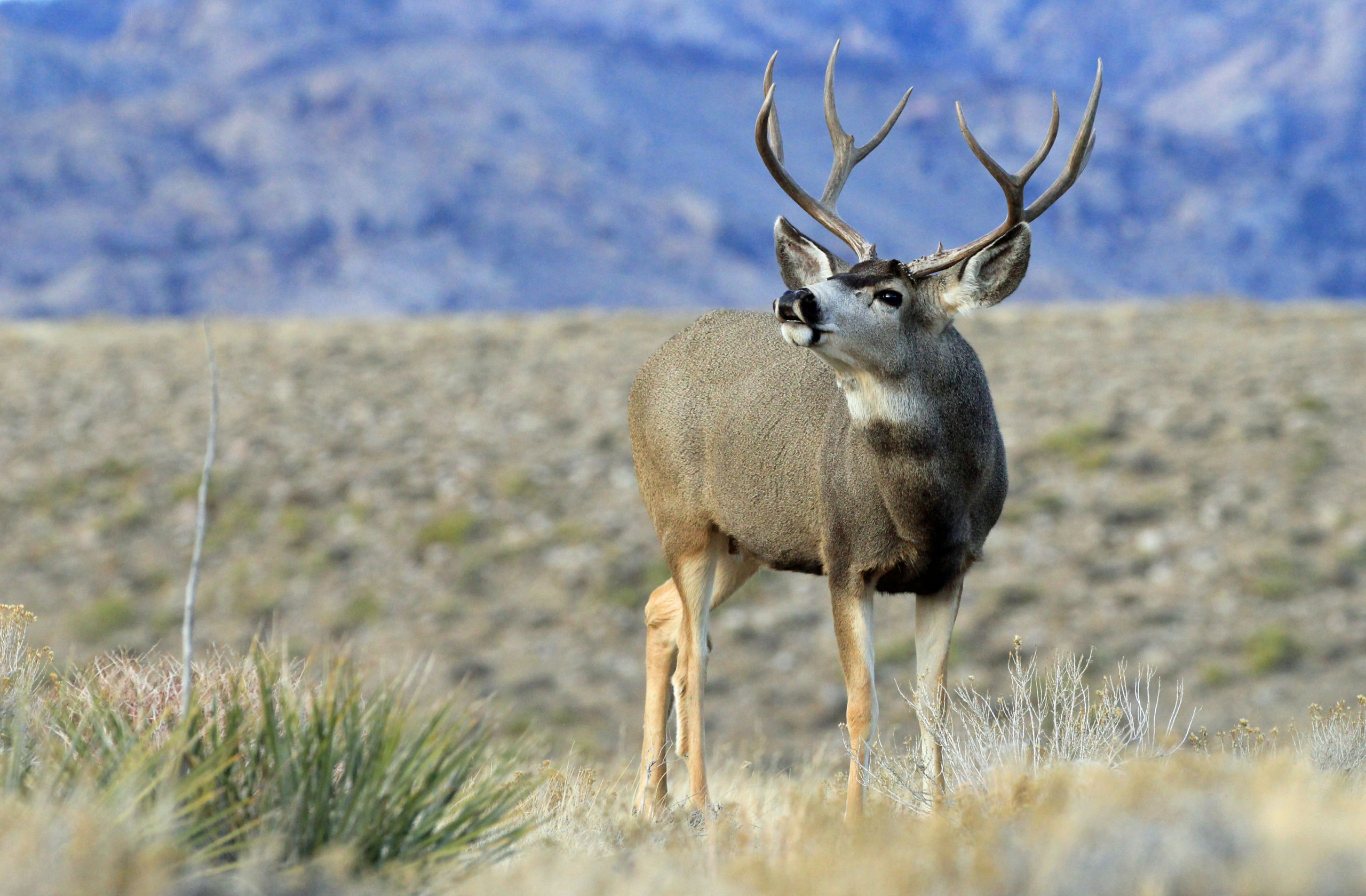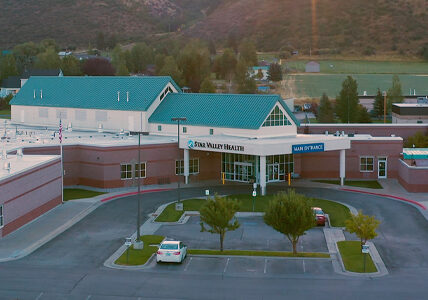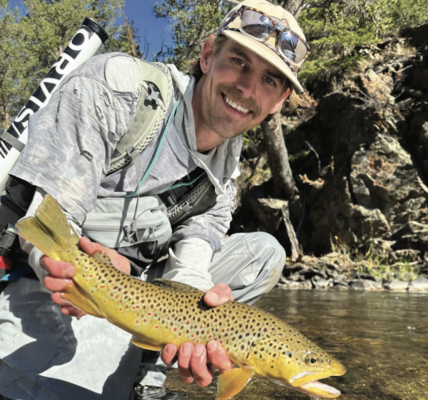
By Mike Koshmrl, WyoFile.com
Elk hunt area 124 south of Interstate 80 in the Red Desert, has been held up as a poster child for what’s wrong with the way Wyoming distributes special hunting licenses to landowners.
The hunting zone reaching from Rock Springs to Baggs is 70% public land, and its northern half is dominated by the checkerboard-style land distribution which complicates or prevents the public from accessing federal lands.
Limited-quota licenses to hunt a bull elk are hard to come by, especially for non-residents: 10 were available in 2021. And seven of those coveted tags — 70% — went to out-of-state hunters who were eligible for special licenses available only to landowners, according to a breakdown of where those tags go prepared by the Wyoming Game and Fish Department.
Such landowner tags are subtracted from an area’s total license quota and are awarded prior to the lotteries that distribute hunting licenses to the general public. In other words, owning land gives prospective Red Desert elk hunters the clear upper hand in acquiring a tag.
There are other unintended consequences and even outright exploitations of Wyoming’s landowner tag system, some observers contend. Under current Wyoming statute, landowners cannot legally subdivide land for the purpose of procuring more hunting licenses. Yet in its public meetings, the Wyoming Wildlife Taskforce has heard stories of land being subdivided for the primary purpose of owners obtaining two more elk hunting licenses for friends or family.
“In various locations around the state, you have some outright abuses of the landowner license system,” said Adam Teten, a Buffalo resident and big game hunter who chairs a subcommittee of the task force exploring landowner license reforms. “Meaning, you have wealthy individuals subdividing pieces of property to gain highly sought after limited-quota elk, deer and antelope licenses.”
It’s unclear how widespread and frequent these scenarios are. But there are real concerns, Teten said, that abuses could become a runaway problem, especially as the desirability of living in the West increases and competition for limited hunting licenses stiffens.
“If we don’t truly address it — whether it’s one or 50 occurrences of abuse — it’s going to be too late to put that genie back in the bottle,” Teten said.
Landowner licenses have significant commercial value in some states, and can even be sold online for premium prices.
That’s not the case in Wyoming, where landowner licenses can only be used by the applicant or an immediate family member. A successful applicant must possess at least 160 contiguous acres that provide habitat for the applicable species: elk, deer, pronghorn or wild turkeys. Landowner tag recipients — who can possess two licenses for each species, good throughout the hunt area — must also be able to demonstrate 2,000 animal use days, e.g., 2,000 elk on their property for a single day or 20 mule deer for 100 days.
“From the department’s perspective, it’s a very good way to just say thanks to landowners for providing habitat,” Wyoming Game and Fish Department Director Brian Nesvik said. “Half of our land area is private land, and if we didn’t have the private landowners we wouldn’t have the abundance of wildlife.”
“I think it’s a good program,” he said, “but just like with any other provision, it needs to be evaluated periodically over time.”
Numbers of landowner licenses issued in Wyoming have increased steadily in recent years. Over a recent 7-year period, the statewide count spanning all species rose 26%, from 2,800 in 2014 to 3,518 in 2021, according to data provided by Game and Fish License Section Manager Jennifer Doering.
Doering pointed to two causes for the increase. After 2019, Game and Fish adopted an online landowner application process, which made the licenses more accessible. Secondly, organizations have recruited landowners to procure licenses that can in turn be donated to disabled military veterans.
“That, I would say, is the biggest increase we’ve seen in landowner licenses,” Doering said.
Donated veteran tags account for 404 of the 718 landowner licenses added between 2014 and ‘21, more than 56% of the increase, according to data Doering provided.
To review its landowner license system, Game and Fish initially turned to the Wyoming Wildlife Taskforce, an 18-member body appointed by leaders of the Wyoming Legislature, governor’s office and Game and Fish. The taskforce makes recommendations about top-priority wildlife-policy issues including hunting opportunity and sportsperson access, and its guidance has already shaped state law that prescribes the percentage of moose, bighorn sheep, mountain goat, bison and grizzly bear hunting licenses that go to Wyoming residents and non-residents.
Changes to the landowner license system have come up at several task force meetings, but proposed reforms have proven divisive.
There have been discussions of capping the percentage of limited-quota licenses that can go to landowners, in order to prevent scenarios like Wyoming’s elk hunt area 124, where landowners claimed 70% of non-residents tags. The taskforce has also walked through potential changes to statute that would refine shareholders’ eligibility for landowner tags on corporate-owned land.
“I’ve heard specifically about places up where coal mines own big chunks of ground, and they’ve allowed their employees [to use landowner tags],” Nesvik said.
When the Wyoming Game and Fish Commission first created special landowner licenses, it was an agriculturally focused program, Nesvik said. But growing crops, hay or livestock wasn’t required, he said, and land ownership patterns have changed.
As of 2018, the vast majority of landowner license recipients have possessed relatively smaller spreads of less than two square miles of property, according to Game and Fish data.
“They’re not cow-calf operations that are getting landowner licenses,” Teten said. Recipients are more likely to be landowners who possess smaller parcels not typically associated with pay-the-bills style agriculture, he said.
“They’re entirely playing within the current set of rules,” Teten said. “I think the consensus is to tighten the rulebook up.”
But through five meetings in 2022, the Wyoming Wildlife Taskforce has not been able to come to terms on recommended changes.
“I don’t see anything wrong with the system as it is,” said Meeteetse-area cattle rancher Duaine Hagen, who serves with Teten on the landowner license subcommittee. “To me, it’s an excellent way to recognize landowners for their contribution, because without private landowners we’re in trouble.”
Hagen’s Fiddle Back Ranch, which is hugged between Upper and Lower Sunshine reservoirs, houses elk, pronghorn, mule deer and whitetail deer. His property falls in areas where Game and Fish caps the number of deer, elk and pronghorn that can be hunted, and without landowner tags it would “absolutely” be difficult to hunt his own land some years, he said.
“My kids hunt, and it’s a family deal,” Hagen said.
Although Hagen believes the program overall is sound, he spoke favorably about some reforms. The state could require landowner tag recipients to renew their application, “every five years or something like that,” Hagen said, rather than having access to the program for perpetuity once they initially qualify.
People subdividing off 160-acre parcels to qualify for more landowner licenses is a “loophole, no question,” Hagen said.
Nesvik, who’s also a task force member, is looking at options to make those exploitations more difficult. While the Game and Fish Commission already has a regulation prohibiting subdividing for the purpose of procuring more landowner licenses, it’s “really hard to enforce,” he said, especially if the license perk isn’t advertised online or in print and rather is conveyed word of mouth.
“One of the things the taskforce has talked about is a minimum acreage size,” Nesvik said. “So if you subdivide your ranch below 500-acre parcels, those parcels, regardless of the [animal] use days, would not qualify [for landowner licenses].”
Teten says he’s seen “a lot of selfishness, from both sides of the aisle.” Do-it-yourself resident hunters like himself without big tracts of land are advocating for equal access to licenses, while landowners are fighting to retain their current level of access to two reliable tags for each eligible species.
“Those are the two hard lines in the sand that I’ve heard from people,” Teten said. The status quo, he said, might be “the best option we have.”
Wyoming Wildlife Taskforce co-chairman Josh Coursey said that the push for landowner license reforms has stalled out, partly because his counterparts are awaiting an internal proposal being developed by Game and Fish. That proposal will be shared with the taskforce at its July 7 meeting and then considered by the Wyoming Game and Fish Commission at its Sept. 13-14 meeting, he said.
“We’re going to see what that looks like first,” Coursey said of the state’s proposal, “and see if it addresses some of the concerns that are being shared and talked about.”





